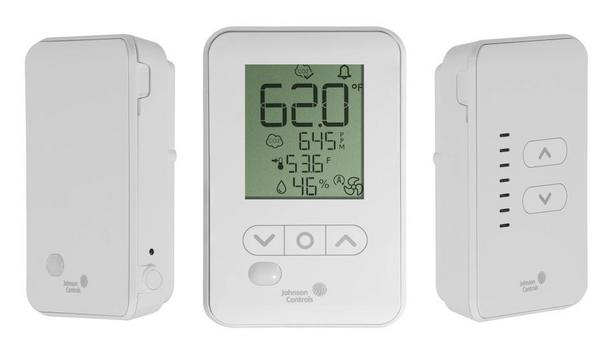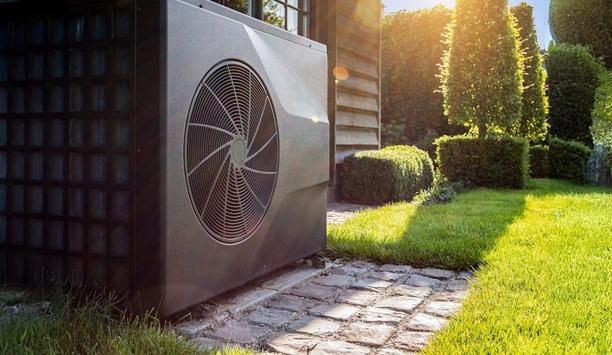The building sector is a major player when it comes to lowering greenhouse gas emissions and increasing energy efficiency. High-performance buildings with very low energy consumption are key to addressing the climate and energy crisis.
Passive House Standard
The Passive House Standard ensures that buildings are designed to be healthy, comfortable, durable, and resilient with very low energy needs. The focus is on making use of “passive” concepts to save energy rather than needing to “actively” heat or cool a building.
The Passive House Institute was founded by Professor Wolfgang Feist in 1996 in the German city of Darmstadt. The independent institute holds a leading position in research and development in the field of energy-efficient building construction and deep retrofits.
High energy savings
Passive House buildings provide very high energy savings compared to conventional new builds. Savings are achieved using highly efficient building systems and components, and careful planning.
 |
| This 6-story and 50-unit building is Canada's 2nd largest certified Passive House Building located in Fort St. John, Canada. © Architects LHRA; photo: Sama Jim Canzian |
As a rule, Passive House components are two to three times more efficient than the corresponding commonly used products.
energy-efficient buildings
“The Passive House standard and the solutions for energy efficient buildings are applicable and required the world over,” says Jessica Grove-Smith, a member of the scientific research team of the Passive House Institute.
“We consult on projects, and participate in and offer events, conferences, webinars, and meetings internationally. Based on the approach of ‘thinking globally and acting locally,’ we work in close collaboration with our affiliate and partner organizations all over the world.”
Passive House concept
Projects around the world have demonstrated that the Passive House concept works well for new builds as well as for deep retrofits of existing buildings, and all sorts of different typologies.
 |
| Built in 1967, the Ken Soble Tower is the oldest high-rise in CityHousing Hamilton's portfolio in Hamilton, Ontario, Canada. A Passive House retrofit made significant improvements for less than the cost of a new code minimum construction and have a much smaller carbon footprint. © Courtesy of Double Space |
By publishing in-use performance data from implemented projects, the Passive House Institute provides transparency and evidence that Passive House delivers the energy savings it set out to achieve.
Passive House 5 Basic Principles
Passive House is a performance-based building standard that focuses on five basic principles:
1) Thermal Insulation:
All opaque building components of the exterior envelope of the house must be very well-insulated
All opaque building components of the exterior envelope of the house must be very well-insulated.
For most cool-temperature climates, this means a heat transfer coefficient (U-value) of 0.15 W/(m2K) at the most, i.e. a maximum of 0.15 watts per degree of the temperature difference and per square meter of exterior surface are lost.
2) Passive House Windows:
To prevent heat transfer, the window frames must be well insulated and fitted with Low-E glazings filled with argon or krypton.
For most cool-temperature climates, this means a U-value of 0.80 W/(m²K) or less, with g-values around 50% (g-value = total solar transmittance, proportion of the solar energy available for the room).
3) Ventilation Heat Recovery:
Efficient heat recovery ventilation allows for good indoor air quality and saves energy.
In a Passive House, at least 75% of the heat from the exhaust air is transferred to the fresh air using a heat exchanger.
4) Airtightness of the Building:
Uncontrolled leakage through gaps must be smaller than 0.6 of the total house volume per hour during a pressure test at 50 Pascal (both pressurized and depressurized).
5) Absence of Thermal Bridges:
Thermal bridges that cannot be avoided must be minimized as much as possible
All edges, corners, connections, and penetrations must be planned and executed with great care so that thermal bridges can be avoided.
Thermal bridges that cannot be avoided must be minimized as much as possible.
Role of Ventilation and Heat/Energy Recovery
As one of the five main principles for a Passive House, a ventilation system with heat/energy recovery is a significant component of energy savings. The aim is to provide fresh air all year round without an energy penalty. Depending on the climate, heat or energy recovery plays an important role in energy savings.
 |
| Built in 1967, the Ken Soble Tower is the oldest high-rise in CityHousing Hamilton's portfolio in Hamilton, Ontario, Canada. A Passive House retrofit made significant improvements for less than the cost of a new code minimum construction and have a much smaller carbon footprint. © Courtesy of Double Space |
As HVAC is an important part of energy-efficient building design and implementation, there are various points of interaction between the Passive House standard and the HVAC profession. For instance, in the context of project consultancy and project certification, part of the process is to engage and provide guidance on technical solutions for energy-efficient HVAC concepts and components.
Optimizing energy performance
Passive House Institute works to optimize and independently certify the energy performance
Furthermore, the Passive House Institute works directly with manufacturers about optimizing and independently certifying the energy performance level of products.
This covers existing products and extends to research in developing innovative solutions specifically suitable for high-performance buildings.
Certification of Thermal Efficiency
Verifying the thermal efficiency, as well as the electrical efficiency, of the ventilation system is a central part of the Passive House certification process.
A Passive House building will have significantly lower heating and cooling loads than a conventional building, which means that smaller and simpler heating and cooling systems can be used. The achieved system efficiency is assessed as part of the total energy limit for Passive House projects.
Assessment parameters
However, for the designer, it is often very difficult to reliably assess a component's energy efficiency, durability, and necessary energy performance parameters.
Available standard parameters are frequently unrealistic or are not accurate enough; reliable project planning using manufacturers’ information alone is often not possible.
Verification method
The main verification method is energy modeling with the Passive House Planning Package
For Passive House building certification, the design and execution are checked carefully and comprehensively. The main verification method is energy modeling with the Passive House Planning Package (PHPP).
Supplementary documentation relating to the construction, such as an airtightness test, completes the quality assurance process. A certificate is only issued if the criteria are met without exception.
Tiers of standard
The “Passive House” standard is applied for newly constructed buildings, with a distinction of three classes “Classic, Plus, and Premium” – the higher tiers award higher overall efficiency and integration of renewable energy supply.
Because retrofitting existing buildings can pose extra challenges, the Passive House Institute offers a dedicated standard for deep energy retrofits. It is named EnerPHit and is also available in three classes: “Classic, Plus, and Premium.”
Advantages
The advantages of building certification for the owner include certainty that an agreed-upon energy standard will be achieved.
An independent quality assessment can also increase property value. Certified Passive House verification using the Passive House Planning Package (PHPP) can also be submitted for various subsidy programs.
Certifying Components and Industry Professionals
Products that carry the seal Certified Passive House Component have been tested according to uniform criteria
The Passive House Institute offers certification for components and for industry professionals as well as for buildings. As an independent authority, the Passive House Institute tests and certifies products in terms of their suitability for use in Passive Houses.
Products that carry the seal Certified Passive House Component have been tested according to uniform criteria; they are comparable in terms of their specific values and are of excellent quality regarding energy efficiency. Their use facilitates the designer’s task and contributes significantly to ensuring the faultless functioning of the resultant Passive House.
Thermal optimization
Currently, the component database of the Passive House Institute contains 1,200 components internationally for highly energy-efficient construction and refurbishment.
The Passive House Institute offers consultations to manufacturers for the thermal optimization of products and planning details to manufacturers. They also certify Passive House-suitable components and detail solutions.
Understanding energy-efficient buildings
To achieve market transformation and improve the general level of efficiency of buildings, various stakeholders involved in the construction of buildings must be aware and have the expertise to promote the Passive House standard and foster a greater public understanding of highly energy-efficient buildings.
The Passive House Institute provides several courses with a different focus for Passive House professionals.
Passive House education
The Passive House Institute offers these courses within an international framework
The two main target groups of Passive House education are designers and tradespersons. The Passive House Institute offers these courses within an international framework of local cooperation partners. The highest level of quality assurance training is the accredited building certifier.
Courses include Certified Passive House designer/consultant; Certified Passive House tradesperson; Certified retrofit expert; Certified Passive House building certifier; Certified PHPP expert; and Certified trainer.
Achieving a Global Footprint
The Passive House Institute achieves a global footprint through the International Passive House Association (iPHA). The network is under the roof of the Passive House Institute.
Members of the global network are Passive House stakeholders including architects, planners, scientists, suppliers, manufacturers, policymakers, contractors, property developers, and more. iPHA works to promote the Passive House Standard and foster a greater public understanding of highly energy-efficient buildings.
Benefits
Together with more than 20 affiliates all over the world, iPHA encourages the exchange of Passive House knowledge, provides members with a range of benefits, and advocates for Passive House. Current iPHA affiliate organizations in North America are Passive House Network, New York Passive House, Passive House California, and Passive House Canada.
Every year, the Passive House Institute invites an international audience to the International Passive House conference which takes place in different cities. The 26th IPHC will take place in March 2023 in Wiesbaden, Germany.






































